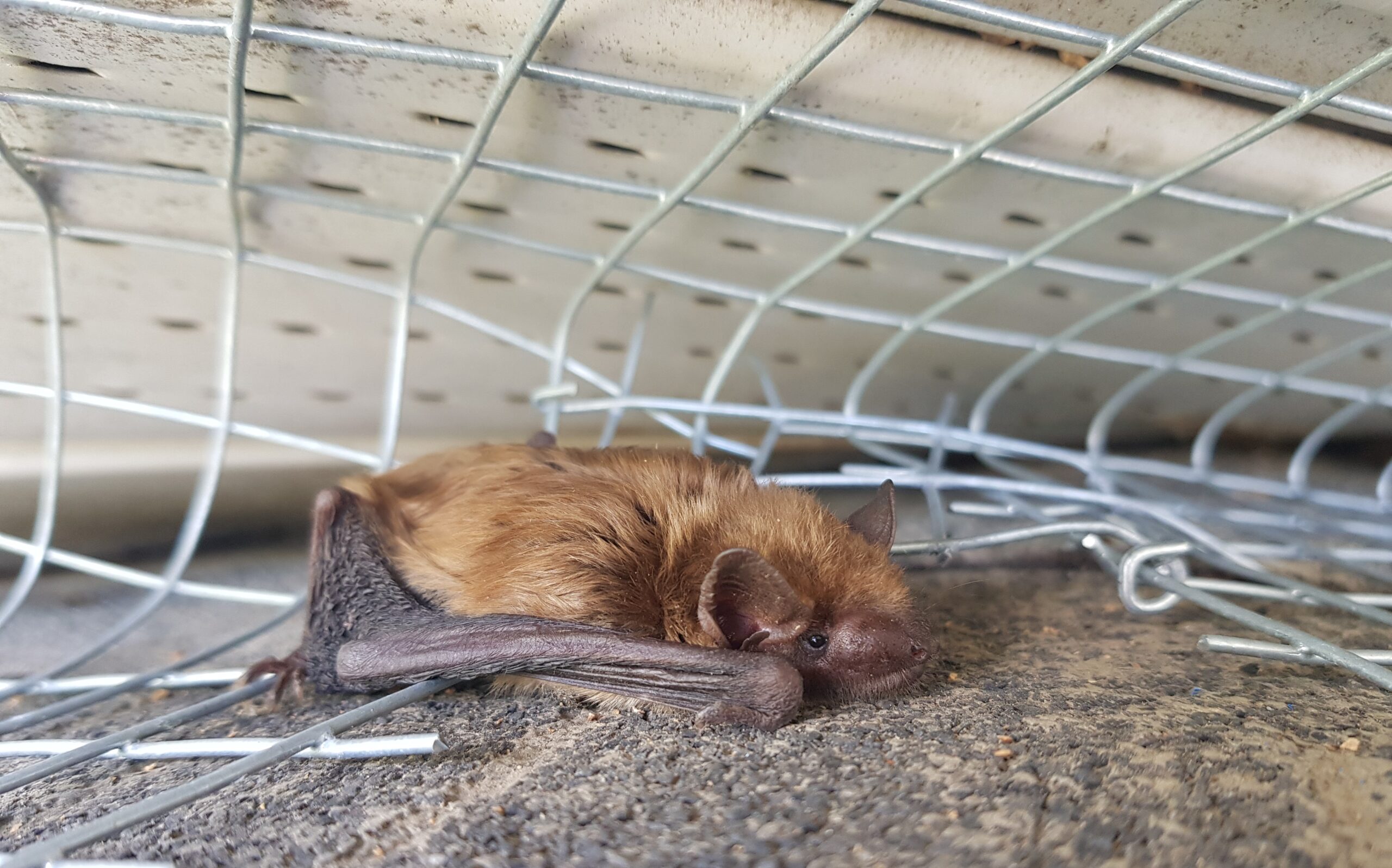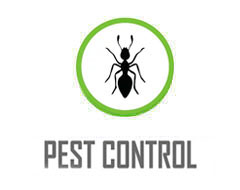
Need help today? Don't wait
> FIND A LOCATIONBats
WHAT ARE BATS DOING ON YOUR PROPERTY
Bats are small, warm-blooded, mammals with the unique ability to fly. They use echolocation to find small insects and can eat up to three times their body weight in a single night. Bats can roost in caves and cliffs, but very often form colonies in homes and buildings. Once inside, bats enjoy the consistent temperatures offered by walls and attics. Although colonies can vary greatly in size, bats can cause building damage and pose serious health risks to occupants.
WHAT WE DO FOR YOU
Removing a colony of bats from your attic is an extremely detail oriented task. Bats can fit through holes as small as a dime, leaving hundreds of potential entry points available on every home. Our trained technicians rely on over 30 years of experience removing bats from new and old homes to know exactly where to look. Knowing where bats typically like to enter homes, as well as keeping eye out for hard-to-spot staining and droppings helps technicians identify all the tiny gaps along your roof that bats squeeze through. Finding every single point of entry as well as potential entry point requires attention to detail. Even the tiniest gap left open risks the colony reestablishing in the future.
After our technicians have identified all points of entry on your home they will begin the removal process. Humanely removing bats requires an understanding of their unique biology. Hibernation and baby season can complicate the timing of removal. Skedaddle has the experience to know the ideal time to remove bats, and where to look for hidden damage and droppings. When the timing is right, our technicians will install one-way doors over their entry and exit points that allow bats to exit to feed but do not allow them to return. All gaps and openings that could be taken advantage of by bays are filled with Skedaddle’s wildlife exclusion sealant to keep them out for good. Skedaddle’s approach to bat removal provides homeowners with a long-term solution and is backed by a lifetime warranty.
WHY YOU NEED BAT REMOVAL SERVICES
For most homeowners the first indication that they may have a bat colony is the discovery of a bat inside the living space of the home. In almost all cases, a bat inside the living space came from the walls or attic and did not fly in through an open door or window as many would suspect. When a colony of bats occupies the walls of a home they very often get lost as they travel and ultimately emerge into the living space, often from the basement where walls tend to open up for plumbing, electrical and HVAC. A single bat inside the living space is best removed by hand, but great care is required as bats are common carriers of rabies.
One of the best ways to confirm the presence of a bay colony inside your home is a thorough attic inspection. While it is rare to see bats themselves, as they generally prefer to rest in little nooks and crannies, they do leave droppings everywhere they go. Skedaddle technicians have the experience and training to find and recognize bat droppings that give away the presence of a colony.
It is important to act quickly at the first sign of bat activity inside your home to ensure you properly plan for the colony’s humane removal. Bats hibernate from September to April, making removal an impossible task. To add to matters, females give birth to babies in the early weeks of June and into August. During baby season, removals cannot take place for risk of orphaning the young inside the home. Our knowledgeable technicians understand how to effectively prepare your home for removal during the small windows it is possible each year. August, through September, is an ideal time to remove bat colonies. During this time, the season’s babies are old enough to fly, and insect populations are at their peak, so the colony is exiting regularly to pass through one-way doors.
Identifying all the small cracks, gaps and holes along the roof that bats use to get inside can be difficult without a trained eye. Soffits, chimneys, and vents are just some of the common points of entry bats use to get inside our homes. Skedaddle technicians are certified in roof and ladder safety to reach the high points of your home and complete the tedious process of sealing every entry point.
While inside a home, bats can create costly damage to insulation with the droppings they leave behind. Levels of contamination depend largely on the size of the colony and the length of time they have occupied the home. Bat droppings inside attics can pose a health risk to humans if disturbed. Without the proper protective equipment, removing bat droppings can lead to bacterial infections and further contamination. Skedaddle’s technicians take the dirty work off your hands, to safely remove bat droppings and soiled attic insulation.

Fall: An Essential Season for Bat Prevention
Autumn marks a vital stage for local bat populations as they prepare for the cold months ahead. With temperatures falling, bats make the most of the last warm evenings by consuming large numbers of insects and building up fat reserves needed for winter survival. At the same time, they establish secure roosts—often inside attics, chimneys, or wall cavities—making fall the most critical period to deal with infestations before colonies settle in until spring.
Since bats are a protected species across much of North America, interrupting their hibernation is both unsafe and illegal. Waking them too early drains their stored energy, jeopardizing their survival. This creates a narrow seasonal window when humane exclusion is both possible and legally permitted, underscoring the urgency of acting before winter sets in.
For homeowners, autumn is the ideal time to thoroughly inspect attics and rooflines for gaps, weather damage, or hidden openings where bats could slip inside. Once hibernation begins, infestations often go unnoticed until spring, when colonies become active again and the problem is more difficult to resolve.
At Skedaddle, our technicians specialize in humane bat control—safely excluding colonies while sealing entry points to prevent their return. Before bats settle in for winter, call on the experts to protect your home. Schedule your fall inspection with Skedaddle today.
Skedaddle Humane Wildlife Control’s Wildlife Technicians are trained to identify bat entry points (they can fit through a hole the size of a dime!), followed by locating the bat colony and determining the phase of the breeding cycle. Our technicians will walk you through each step of the process, as they complete a 35-50 point inspection of your property and identify all signs of wildlife. To ensure a humane and economical removal, within the boundaries of the law, our strategy involves removing the entire bat colony from your home.
Our knowledge of bat behavior and biology ensures that breeding bats do not leave behind their babies, a situation that can increase health concerns and costs. Once we have a complete understanding of the situation, our technicians will explain their findings and walk you through the removal process. At every bat entry point a temporary one-way door will be installed, allowing the colony to exit together safely without the ability to return. All of our work is backed by a lifetime warranty.
How to Humanely Remove Bats from Your Home?
Why Do Bats Live in Homes?
How Do I Know if I Have Bats?
Are Bats Endangered?
How to Keep Bats Out of Your Chimney?
What Do Bats in the Attic Sound Like?

Skedaddle Humane Wildlife Control’s wildlife removal strategy is humane, safe and reliable. Part of our process involves clearing and cleaning any contaminated material, namely bat droppings, that can pose serious health risks. A colony of bats inside your walls and attic can produce large amounts of feces, which often carry an infection called histoplasmosis. Accumulations of bat droppings can also lead to odor problems inside homes.Your Skedaddle wildlife technician will advise cleaning and clearing tactics, like insulation removal and attic restoration, depending on the severity of contamination. This will help ensure a safe and healthy home for you and your family. All droppings and contaminated materials are removed without spreading bacteria throughout the home. After each thorough cleaning, all areas will be sprayed with a liquid odour control and bacteria digester that removes harmful bacteria left behind.
How Do Bats Spread Rabies?
Why Are Bats Dangerous?
How to Clean Bat Droppings?
The next step in Skedaddle Humane Wildlife Control’s process after humanely removing and safely cleaning up after wildlife, is ensuring that your home and family are protected. To prevent future re-entry, your Wildlife Technician will use Skedaddle Humane Wildlife Control’s pioneered exclusion sealant to fill even the tiniest gaps and holes leading into your home. Since bats can fit through any hole the size of a dime, our technicians take the time to thoroughly seal every entry point from the top to bottom of your home. Our products are tested to stand the test of time against year round elements, keeping your home bat free for good.
How Do Bats Get into My Attic?
Why DIY Bat Removal Doesn’t Work?
How Can I Tell If I Have Bats In My Home?
How To Install A Bat House?
How to Keep Bats Out of My Attic?
Common Bat Questions
HOW DO BATS GET INTO HOUSES?
Most often bats find their way into our homes through gaps and openings between building materials along your roofline. Unlike other animals, bats cannot create openings themselves, instead they squeeze their way into small gaps left behind by builders during construction or openings that form as your home ages. Bats only need a hole as small as 6 millimeters, or about the size of a dime, to squeeze their way inside.
I HAD A BAT IN MY HOME, DOES THAT MEAN THERE ARE MORE?
Unfortunately, yes. The sight of a bat in your living space is a key indication that a colony is roosting somewhere in your home. Bat colonies are most commonly found in attics and walls, but during summer, when it gets too hot, they will move down wall cavities in search of cooler temperatures. As they move around your walls they will occasionally become lost and later emerge into the living space of your home.
WHAT DISEASES CAN BATS CARRY?
Bats are common rabies carriers, and can spread the disease to humans and pets through a bite or scratch. Bat colonies will leave guano throughout the attic and wall cavities they occupy. Bat guano can lead to respiratory infection called histoplasmosis that can infect humans and other animals when inhaled.
WHEN DO BATS HAVE BABIES?
Female bats give birth to one pup between early June and July. Pups will stay inside the roost with their mother until August when they are old enough to take flight and begin feeding on insects themselves. Removing and excluding adult female bats during the birthing season is not humane as it means locking them away from their babies and starving them to death inside the house.
WHEN DO BATS HIBERNATE?
During the late fall as temperatures begin to drop and there are fewer insects for them to feed on, bat colonies settle into hibernation. This deep sleep state lowers their metabolic system and allows them to conserve energy and warmth until the arrival of spring. While in hibernation bats are quiet, which makes identifying an infestation difficult. Many homeowners are unaware that a colony is in their home until a bat makes its way into the living space of the home, most often during summer.
ARE BATS NOCTURNAL
Yes, bats are nocturnal creatures that are most active at night. Bats emerge at dusk to feed on flying insects and drink water. Scratching or squeaking sounds coming from your attic or wall cavities during the evening hours can be an indication that a bat colony is living in your home.
CALL US TODAY
1.888.592.0387
OR
Request for Services







